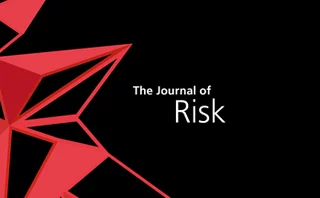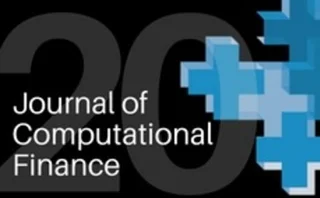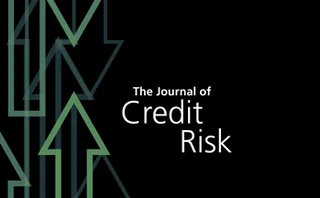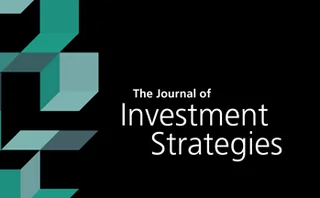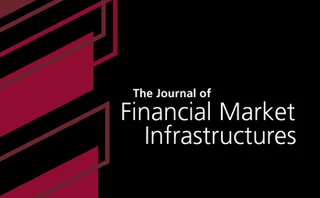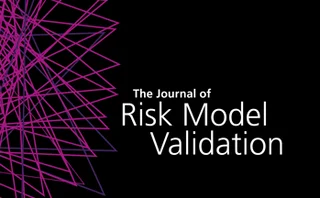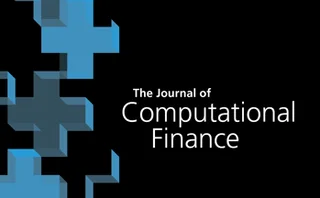Original research
Decomposition of portfolio risk into independent factors using an inductive causal search algorithm
This paper presents a method to estimate and decompose a portfolio’s risk along independent factors.
Path-consistent wrong-way risk: a structural model approach
The author of this paper presents a general and path-consistent wrong-way risk (WWR) model that does not require simulation of credit and market variables simultaneously.
Impact of nonstationarity on estimating and modeling empirical copulas of daily stock returns
This paper investigates the extent to which the nonstationarity of financial time series affects both the estimation and the modeling of empirical copulas.
Valuation of barrier options using sequential Monte Carlo
The authors present Sequential Monte Carlo (SMC) method for pricing barrier options.
Modeling the current loan-to-value structure of mortgage pools without loan-specific data
This paper presents a method for approximating the current loan-to-value (CLTV) and remaining principal structures of heterogeneous mortgage loan pools.
A reduced basis method for parabolic partial differential equations with parameter functions and application to option pricing
The authors introduce an RB space–time variational approach for parametric PPDEs with coefficient parameters and a variable initial condition.
The probability of backtest overfitting
The authors propose a general framework to assess the probability of backtest overfitting (PBO).
Modeling corporate customers’ credit risk considering the ensemble approaches in multiclass classification: evidence from Iranian corporate credits
This paper introduces a model which enables lenders to develop specific policies for credit granting by predicting the solvency and insolvency rates of their corporate clients.
An assessment of operational loss data and its implications for risk capital modeling
The author of this paper assesses operational loss data and its implications for risk capital modeling.
Comments on the Basel Committee on Banking Supervision proposal for a new standardized approach for operational risk
In this paper, the behavior of the SMA is studied under a variety of hypothetical and realistic conditions, showing that the simplicity of the new approach is very costly.
Should the advanced measurement approach be replaced with the standardized measurement approach for operational risk?
This paper discusses and studies the weaknesses and pitfalls of the SMA and the implicit relationship between the SMA capital model and systemic risk in the banking sector.
Multifactor risk models and heterotic CAPM
The authors of this paper give a complete algorithm and source code for constructing general multifactor risk models via any combination of style factors, principal components and/or industry factors.
The effective supply of collateral in Australia
This paper attempts to quantify the “effective” supply of collateral assets in Australia by applying a measure of supply that adjusts outstanding issuance for two important features of the collateral market.
The role of collateral in supporting liquidity
This paper focuses on the use of high-quality assets for collateral purposes.
Mobilization of collateral in Germany as a reflection of monetary policy and financial market developments
This paper describes and analyzes developments in the market value of marketable assets submitted as collateral in Germany and the Eurosystem against the backdrop of the financial market crisis.
Impact of monetary policy on collateral reuse
The authors provide theoretical microfoundations to understand the impact of monetary policy on markets characterized by collateral reuse.
Collateral chains and incentives
The authors model the asymmetry between collateral values to the parties in the collateral chain. The paper highlights that collateral reuse can be socially beneficial if the costs of misallocation are not significant.
Systematic analysis of the evolution of electricity and carbon markets under deep decarbonization
A computationally intensive, multimethod modeling process is undertaken to address the question of whether carbon markets can offer the desired solution of balancing initiatives for technological change while maintaining a commitment to market…
Some options for evaluating significant deterioration under IFRS 9
The authors of this paper address some issues to do with IFRS 9 and explain how to determine if an instrument has suffered serious deterioration in credit risk.
A correlated structural credit risk model with random coefficients and its Bayesian estimation using stock and credit market information
Using historical equity and credit market data, this paper illustrates the validation of a structural correlated default model applied to Black–Cox setups.
Modeling joint defaults in correlation-sensitive instruments
This paper presents a simple model for joint defaults and shows how it can be applied to pricing and risk-managing instruments that are sensitive to credit correlation.
The effect of market conditions on forward-looking portfolio performance
The authors of this paper apply a forward-looking approach to the minimum variance portfolio optimization problem for a selection of 100 stocks.
The determinants of regime switching in the natural gas and crude oil cointegrating relationship
This paper aims to find determinants of the endogenous regime-switching process underlying the cointegrating relationship between natural gas and crude oil.
